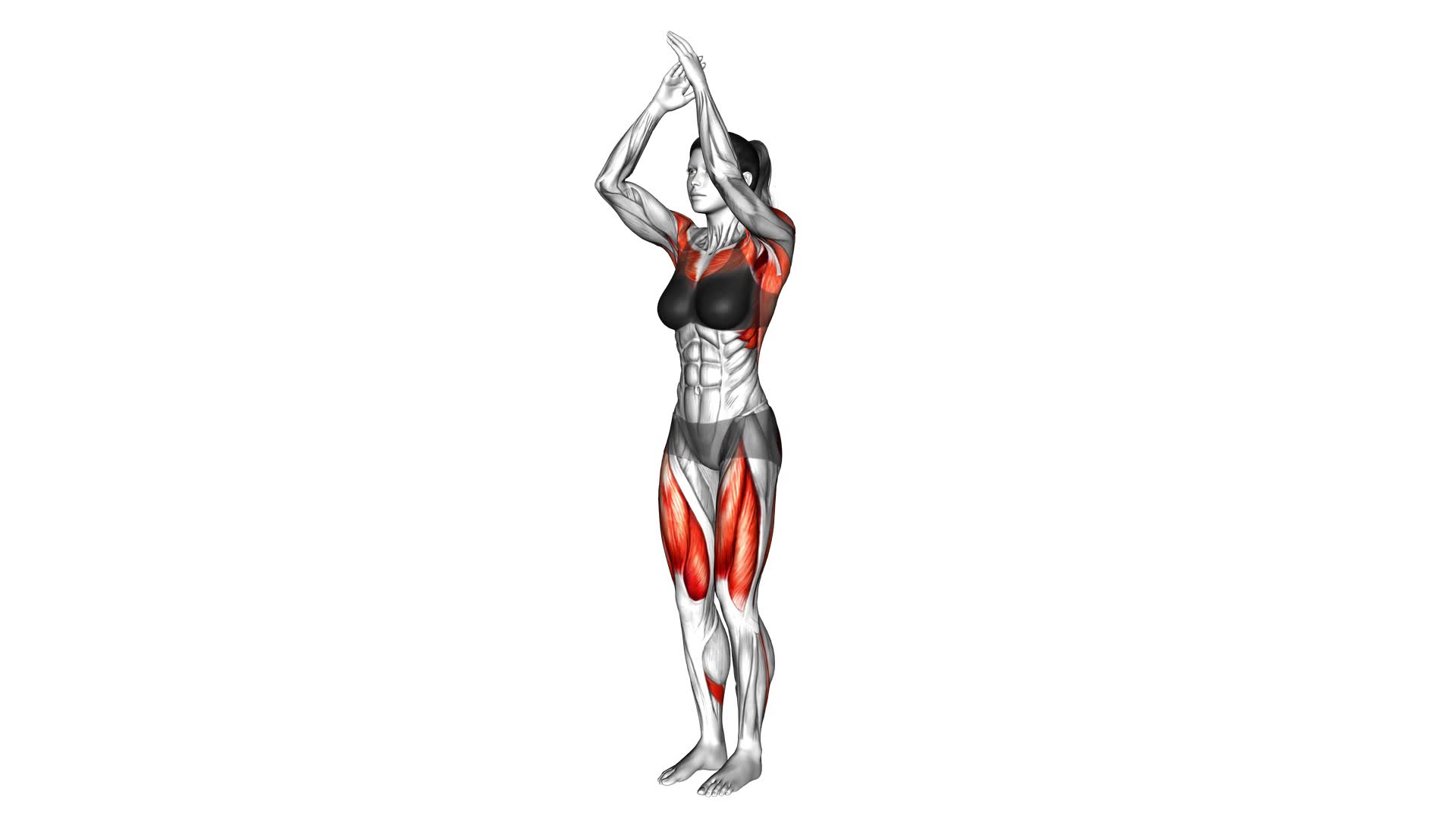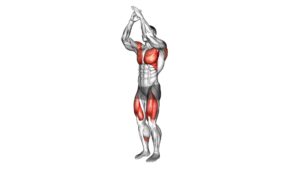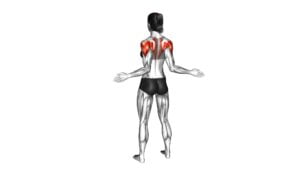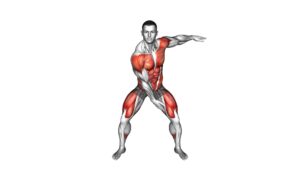Bouncing Circle Draw (female) – Video Exercise Guide & Tips

Are you looking for an effective exercise to add to your routine? Look no further than the Bouncing Circle Draw!
Watch This Exercise Video
This video exercise guide and tips will show you how to properly perform this exercise and maximize your workout.
Avoid common mistakes and discover variations and modifications to tailor the exercise to your fitness level.
Get ready to achieve your fitness goals with the Bouncing Circle Draw!
Key Takeaways
- The Bouncing Circle Draw exercise targets core muscles and improves strength and balance.
- Proper technique includes starting in a lying position, lifting the head, neck, and shoulders off the ground, and drawing a small circle with the torso.
- Common mistakes to avoid include using the neck instead of engaging abdominal muscles, allowing the lower back to lift off the ground, and moving too quickly or using momentum.
- Modifications and alternatives for the exercise include using support under the lower back, performing on an unstable surface, adding resistance with bands or weights, and adjusting the pace for intensity and control.
Benefits of the Bouncing Circle Draw Exercise
The exercise guide provides you with the benefits of the Bouncing Circle Draw exercise. Proper form is crucial when performing this exercise to maximize its effectiveness and prevent injury. Maintaining proper form ensures that you're targeting the right muscles and engaging them correctly.
This exercise primarily focuses on your core muscles, which play a vital role in stabilizing your body and improving overall strength and balance. Engaging your core during the Bouncing Circle Draw exercise helps in strengthening your abdominal muscles, lower back, and obliques. It also improves your posture and stability, leading to better performance in daily activities and sports. By properly engaging your core, you activate the deep muscles that support your spine and pelvis, promoting a strong and stable core foundation.
Transitioning into the subsequent section on how to properly perform the Bouncing Circle Draw exercise, it's important to remember that maintaining proper form and engaging your core throughout the exercise will allow you to reap its full benefits and avoid any potential injuries. So, let's dive into the step-by-step guide to ensure you perform this exercise correctly and safely.
How to Properly Perform the Bouncing Circle Draw Exercise
To properly perform the Bouncing Circle Draw exercise, focus on maintaining a stable core and engaging your abdominal muscles. Here is a step-by-step guide to help you perform the exercise correctly:
- Start by lying flat on your back with your knees bent and feet flat on the ground.
- Place your hands behind your head, elbows pointing out to the sides.
- Lift your head, neck, and shoulders off the ground, keeping your lower back pressed into the floor.
- Begin the exercise by drawing a small circle with your torso. Imagine your belly button is a pencil and trace a circle on the ceiling.
- Once you complete the circle, reverse the direction and continue for the desired number of repetitions.
Common mistakes to avoid when performing the Bouncing Circle Draw exercise include:
- Using your neck to lift your head instead of engaging your abdominal muscles.
- Allowing your lower back to lift off the ground, which can strain the lower back.
- Moving too quickly or using momentum to perform the exercise, rather than focusing on controlled movements.
- Forcing the range of motion and sacrificing proper form.
Workout modifications:
- If you find it challenging to keep your feet on the ground, you can place a towel or yoga block under your lower back for support.
- If lifting your head and shoulders off the ground is difficult, you can start by performing the exercise with your head resting on a folded towel or cushion until you build enough strength.
Remember to consult with a fitness professional before attempting any new exercise and listen to your body to avoid any potential injuries.
Tips for Maximizing Your Workout With the Bouncing Circle Draw Exercise
Maximize your workout with the Bouncing Circle Draw exercise by incorporating these effective tips.
To maximize calorie burn and improve core strength, focus on proper form and engage your core throughout the exercise. Start by standing with your feet shoulder-width apart and your knees slightly bent. Keep your spine neutral and your shoulders relaxed.
As you draw circles with your hips, make sure to maintain control and avoid any jerky movements. This will ensure that you're effectively engaging your core muscles and maximizing the calorie burn.
Additionally, you can increase the intensity of the exercise by adding resistance, such as holding a weight or using a resistance band. This will challenge your muscles and further improve your core strength.
Remember to breathe steadily and maintain a consistent pace throughout the exercise. By following these tips, you can maximize the benefits of the Bouncing Circle Draw exercise and achieve your fitness goals efficiently.
Common Mistakes to Avoid During the Bouncing Circle Draw Exercise
To make the most out of the Bouncing Circle Draw exercise, it's crucial to avoid some common mistakes.
Firstly, ensure that your hand placement is correct throughout the movement, as incorrect positioning can hinder your progress.
Secondly, focus on maintaining proper wrist control to effectively execute the exercise and maximize its benefits.
Lastly, be mindful of using the correct technique to avoid any potential injuries and ensure optimal results.
Incorrect Hand Placement
Ensure proper hand placement to avoid common mistakes during the Bouncing Circle Draw exercise. Correct hand positioning and wrist stability are crucial for maximizing the effectiveness of this exercise. Here are some common mistakes to avoid:
- Placing your hand too close to the paper: This can limit your range of motion and make it difficult to create smooth, circular motions.
- Gripping the pen too tightly: Holding the pen too tightly can strain your hand and wrist, leading to discomfort and decreased control.
- Allowing your wrist to collapse: Keep your wrist straight and stable throughout the exercise to ensure smooth and precise movements.
- Failing to maintain a light touch: Applying too much pressure on the paper can cause the pen to skip or drag, resulting in uneven lines.
Lack of Wrist Control
Improve your Bouncing Circle Draw exercise by avoiding common mistakes such as lacking wrist control.
Proper wrist control is essential for improving grip strength and preventing wrist injuries during this exercise. When executing the Bouncing Circle Draw, make sure to maintain a firm grip on the handle and keep your wrist aligned with your forearm.
Avoid excessive wrist movement or bending, as this can put unnecessary strain on the joint and increase the risk of injury. By maintaining proper wrist control, you can enhance your performance in the exercise and reduce the chances of developing wrist discomfort or pain.
Now, let's move on to the next section and discuss the importance of using proper technique.
Not Using Proper Technique
When performing the Bouncing Circle Draw exercise, it's important to avoid common mistakes and use proper technique to maximize your results. Not using proper technique can lead to incorrect form and potential injuries.
To ensure you're doing the exercise correctly and safely, here are some common mistakes to avoid:
- Rushing the movement: Take your time and focus on the quality of each repetition.
- Using excessive wrist movement: Use your entire arm to draw the circle, rather than relying solely on your wrist.
- Neglecting core stability: Engage your core muscles to maintain stability throughout the exercise.
- Gripping the handle too tightly: Maintain a relaxed grip to prevent unnecessary strain on your wrist and forearm.
By avoiding these mistakes, you can reduce the risk of injuries and achieve better results.
Now, let's move on to discuss variations and modifications for the bouncing circle draw exercise.
Variations and Modifications for the Bouncing Circle Draw Exercise
To add variety and challenge to your Bouncing Circle Draw exercise, try incorporating different modifications and variations.
By making small adjustments to the exercise, you can target different muscle groups and increase the difficulty level.
One variation you can try is performing the exercise on an unstable surface, such as a balance board or a Bosu ball. This will engage your core muscles even more as you work to maintain your balance throughout the movement.
Another modification is to use resistance bands or weights to add resistance to the exercise. This will help to further strengthen your upper body muscles, particularly your shoulders and arms.
Additionally, you can try speeding up or slowing down the pace of the exercise to change the intensity. By performing quick, explosive movements, you'll challenge your muscles to work harder and increase your heart rate. On the other hand, by performing slow, controlled movements, you'll focus on building strength and stability.
Remember to always listen to your body and choose modifications and variations that suit your fitness level and goals.
Sample Workout Routine Incorporating the Bouncing Circle Draw Exercise
Incorporate the Bouncing Circle Draw exercise into your workout routine to target multiple muscle groups and challenge your body. Here's a sample workout routine that includes this exercise:
- Warm-up: Start with a 5-minute cardio activity like jogging or jumping jacks to get your blood flowing and prepare your muscles for the workout.
- Bouncing Circle Draw: Perform 3 sets of 10 reps on each side. Remember to maintain proper form and engage your core throughout the movement.
- Superset: Pair the Bouncing Circle Draw with squats to further strengthen your lower body. Do 3 sets of 12 reps for each exercise, alternating between them with minimal rest.
- Cool-down: Finish your workout with some stretches to help your muscles recover and prevent post-workout soreness. Focus on stretching your legs, hips, and core.
If you need modifications or alternatives for the Bouncing Circle Draw exercise, you can try the following:
- Use a stability ball: Place your hands on the ball instead of the floor to provide additional support and stability.
- Perform the exercise on a wall: Lean against a wall while drawing circles with your leg to reduce the intensity and make it easier for beginners.
- Use ankle weights: Add resistance to the exercise by wearing ankle weights while performing the Bouncing Circle Draw.
Remember to listen to your body and adjust the workout according to your fitness level and goals.
Frequently Asked Questions
Can the Bouncing Circle Draw Exercise Help With Weight Loss?
The bouncing circle draw exercise is a fun and effective way to improve cardiovascular health, which can contribute to weight loss.
By incorporating dynamic movements and engaging multiple muscle groups, it helps to burn calories and increase your heart rate.
While it isn't the only exercise for weight loss, it offers a unique combination of cardio and strength training.
Remember to consult with a fitness professional to develop a well-rounded exercise routine tailored to your specific goals.
What Muscles Does the Bouncing Circle Draw Exercise Target?
The bouncing circle draw exercise targets your core strength and stability, as well as activates your hips and glutes. By engaging these muscle groups, you can improve your overall balance and coordination.
This exercise is a great way to work multiple muscles at once, making it efficient and effective for building strength and toning your body.
Incorporating the bouncing circle draw into your fitness routine can help you achieve your weight loss goals.
How Many Repetitions Should I Do for the Bouncing Circle Draw Exercise?
For the bouncing circle draw exercise, you should aim to do 8-12 repetitions per set. This will help you build strength and endurance in your core muscles. Weighted variations of this exercise can also be incorporated to increase the intensity and challenge your muscles even more.
Incorporating the bouncing circle draw into your full body workout routine can provide numerous benefits, such as improving balance, stability, and overall core strength.
Is the Bouncing Circle Draw Exercise Suitable for Beginners?
The bouncing circle draw exercise is a great option for beginners. It's effective for toning muscles and can also improve coordination skills. By incorporating bouncing movements and drawing circles with your body, you engage multiple muscle groups and enhance your overall body control.
This exercise can be modified to suit different fitness levels, allowing beginners to start at a comfortable intensity and gradually increase as they progress. Give it a try and see the benefits for yourself!
Can I Do the Bouncing Circle Draw Exercise if I Have a Knee Injury?
Yes, you can modify the bouncing circle draw exercise for your knee injury.
It's important to listen to your body and not push yourself too hard.
You can try doing the exercise without resistance bands or using lighter bands to reduce strain on your knees.
Remember to consult with a healthcare professional or physical therapist for personalized advice and guidance.
Stay safe and take care of your knees while staying active.
Conclusion
The Bouncing Circle Draw exercise is a beneficial workout for improving coordination and strengthening core muscles.
By following the proper technique and incorporating variations, you can maximize the effectiveness of this exercise.
Avoid common mistakes such as using momentum or incorrect form, and modify the exercise to suit your fitness level.
Incorporate the Bouncing Circle Draw into your workout routine for a challenging and effective full-body workout.

Author
Years ago, the spark of my life’s passion ignited in my mind the moment I stepped into the local gym for the first time. The inaugural bead of perspiration, the initial endeavor, the very first surge of endorphins, and a sense of pride that washed over me post-workout marked the beginning of my deep-seated interest in strength sports, fitness, and sports nutrition. This very curiosity blossomed rapidly into a profound fascination, propelling me to earn a Master’s degree in Physical Education from the Academy of Physical Education in Krakow, followed by a Sports Manager diploma from the Jagiellonian University. My journey of growth led me to gain more specialized qualifications, such as being a certified personal trainer with a focus on sports dietetics, a lifeguard, and an instructor for wellness and corrective gymnastics. Theoretical knowledge paired seamlessly with practical experience, reinforcing my belief that the transformation of individuals under my guidance was also a reflection of my personal growth. This belief holds true even today. Each day, I strive to push the boundaries and explore new realms. These realms gently elevate me to greater heights. The unique combination of passion for my field and the continuous quest for growth fuels my drive to break new ground.







